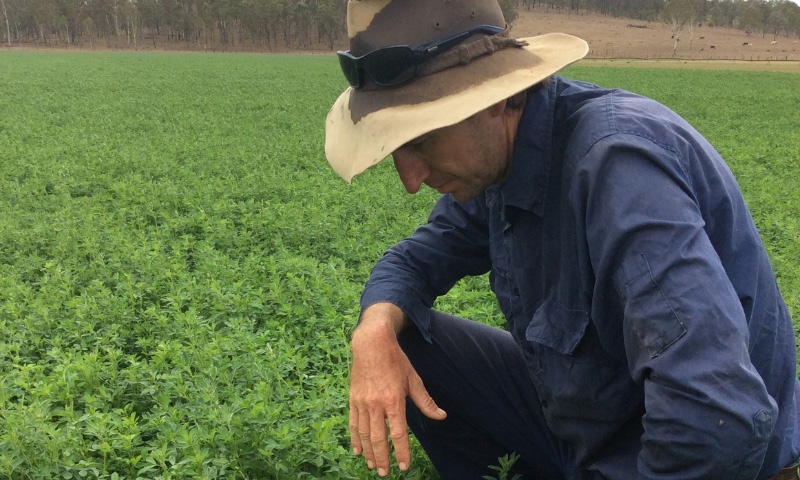Lucerne – A 20-Year Apprenticeship
Product Range: NatraMin Cal-S
Region: Nanango, QLD
The best part of what we do is not just seeing the success of our products, but seeing ‘the end result’ of the program. At AgSolutions we are simply one part of your program and Peter Coyne, a Lucerne and cereal grower at Nanango in QLD’s South-Burnett, made me smile when he said, “well I guess I’ve finished my 20-year apprenticeship in growing Lucerne”. But I listened more intently as he elaborated on the finer details of his program and success that includes many sleepless nights baling hay and irrigating.
The key message was “focus on good nutrition” and the proof of this is a high yielding stand of Lucerne in its sixth season and still cutting 125 bales/Ha. Peter explains, “we grow and cut winter dormant varieties and on average cut 112 bales/Ha. In good seasons we’ll cut 150-175 bales/Ha when rain provides some assistance. Sulphate of Potash complements NatraMin and is part of our fertiliser program to combat nutrient removal with quality inputs.”
I asked Peter, “Why do you still use NatraMin?” Peter’s response was adamant, “what really convinced me was many years ago in one paddock there was an area that wouldn’t grow anything. It was a wetter/sour area and despite double fertiliser and manure rates it wouldn’t grow or yield anything. As a test, 400kg/Ha of NatraMin Cal-S was applied and we saw the problem spot disappear. We grew a wheat crop that went 5 tonne/Ha and you couldn’t pick the difference. NatraMin addresses soil biology as well, which is a bonus that our other inputs don’t address.”
All of our Lucerne gets an annual application of 400-500kg/Ha of NatraMin Cal-S. The key with NatraMin is if you pay attention you will see the difference. We’ve now used it for 12-13 years and it’s simply part of our annual program. NatraMin is not Nitrogen so the response is not overnight,” concludes Peter.
Peter Coyne has witnessed this and commented, “in these tougher dry conditions our soil and Lucerne is in better shape. The Lucerne plants are hanging onto their leaf and stands have hung on in the dry and not dropped that bottom leaf which is yield and quality in the bale”.
Irrigation and electricity are the biggest inputs for Lucerne in 2019. Capturing more moisture in the soil equates to yield and savings, especially with the demand on hay set to continue for some time until the season breaks and hay sheds gradually fill up.

